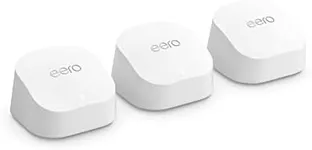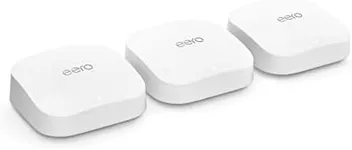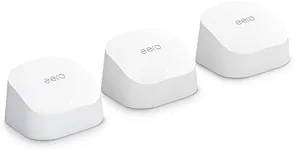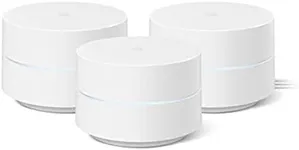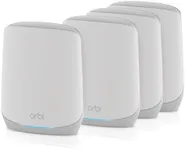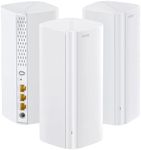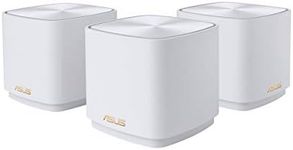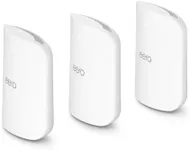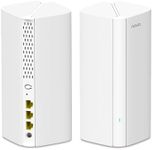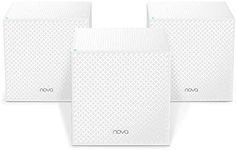Buying Guide for the Best Budget Mesh Wifi
When choosing a budget mesh Wi-Fi system, it's important to understand the key specifications that will impact your internet experience. Mesh Wi-Fi systems are designed to provide seamless and consistent internet coverage throughout your home by using multiple nodes that work together. By understanding the key specs, you can make an informed decision that best fits your needs and ensures you get the most out of your investment.Coverage AreaCoverage area refers to the total square footage that the mesh Wi-Fi system can effectively cover. This is important because it determines how well the system will provide internet access throughout your home. If you have a small apartment, a system with a coverage area of up to 2,000 square feet may be sufficient. For larger homes, you might need a system that covers 4,000 square feet or more. To pick the right one, consider the size of your home and any potential obstacles like walls or floors that could interfere with the signal.
Number of NodesNodes are the individual units that make up the mesh Wi-Fi system. The number of nodes you need depends on the size and layout of your home. A smaller home might only need a two-node system, while a larger home with multiple floors might require three or more nodes. More nodes can help eliminate dead zones and provide a stronger, more reliable signal throughout your home. Assess your home's layout and the areas where you need strong Wi-Fi coverage to determine the right number of nodes for you.
SpeedSpeed refers to the maximum data transfer rate that the mesh Wi-Fi system can handle, usually measured in megabits per second (Mbps). This is important because it affects how quickly you can download and upload data, stream videos, and play online games. Basic systems might offer speeds up to 300 Mbps, which is suitable for light internet usage like browsing and emailing. For more demanding activities like HD streaming or online gaming, look for systems that offer speeds of 600 Mbps or higher. Consider your internet usage habits to choose a system with the appropriate speed.
Band SupportBand support refers to the frequency bands that the mesh Wi-Fi system can operate on, typically 2.4 GHz and 5 GHz. Dual-band systems support both frequencies, while tri-band systems add an additional 5 GHz band. The 2.4 GHz band offers longer range but slower speeds, while the 5 GHz band provides faster speeds but shorter range. Tri-band systems can handle more devices and reduce congestion by dedicating one band to communication between nodes. If you have many devices or need high-speed internet in multiple areas, a tri-band system might be the best choice. For fewer devices or less demanding usage, a dual-band system should suffice.
Ease of Setup and ManagementEase of setup and management refers to how simple it is to install and maintain the mesh Wi-Fi system. This is important because a user-friendly system can save you time and frustration. Look for systems that offer app-based setup and management, which can guide you through the installation process and allow you to monitor and control your network from your smartphone. Some systems also offer features like parental controls and guest networks. If you're not tech-savvy, prioritize systems with straightforward setup and intuitive management options.
Security FeaturesSecurity features refer to the protections that the mesh Wi-Fi system offers to keep your network and data safe. This is important because it helps prevent unauthorized access and cyber threats. Look for systems that offer WPA3 encryption, automatic firmware updates, and built-in antivirus protection. Some systems also provide advanced features like device quarantine and network activity monitoring. If you have sensitive data or want to ensure the highest level of security, prioritize systems with robust security features.
